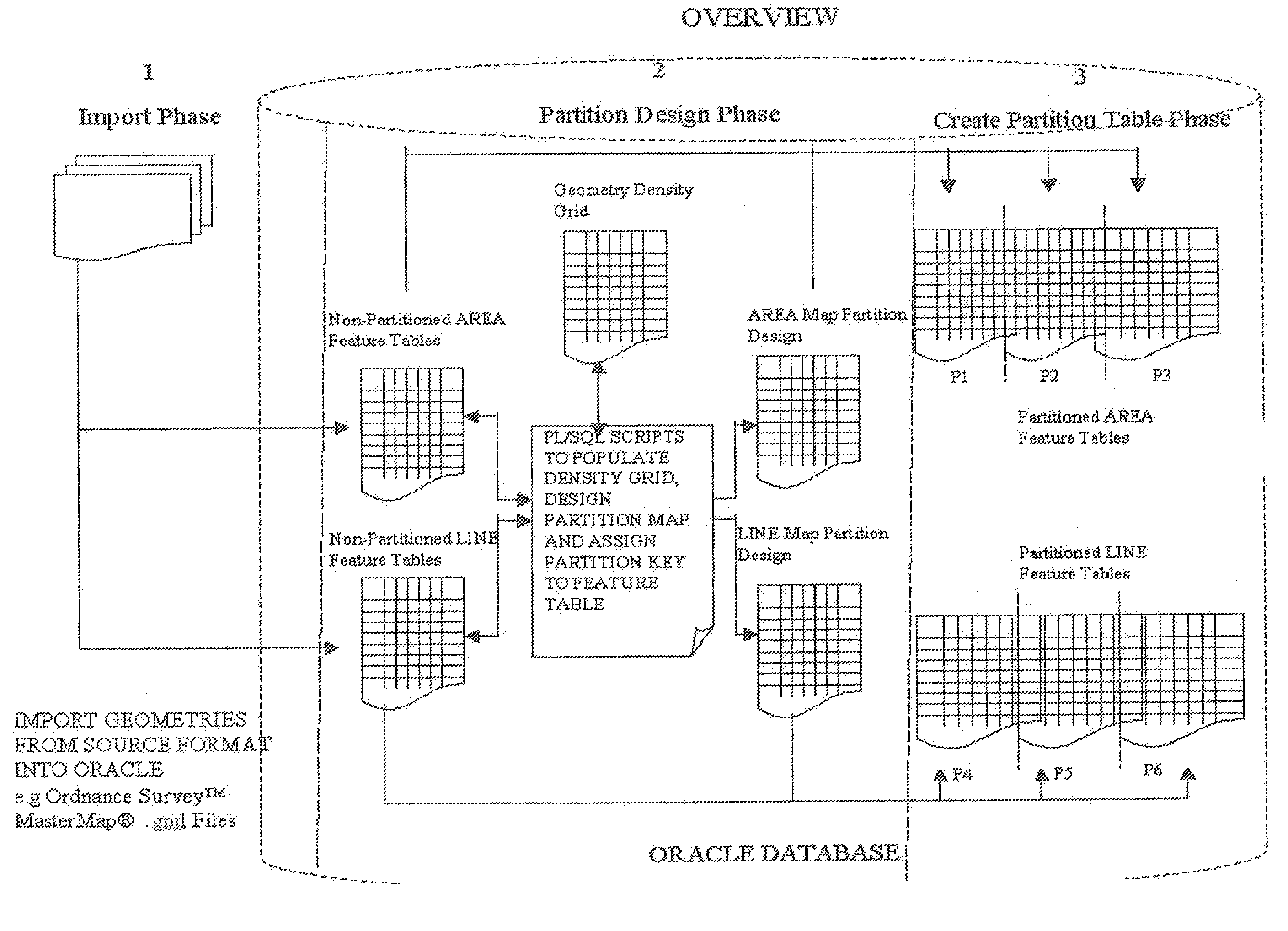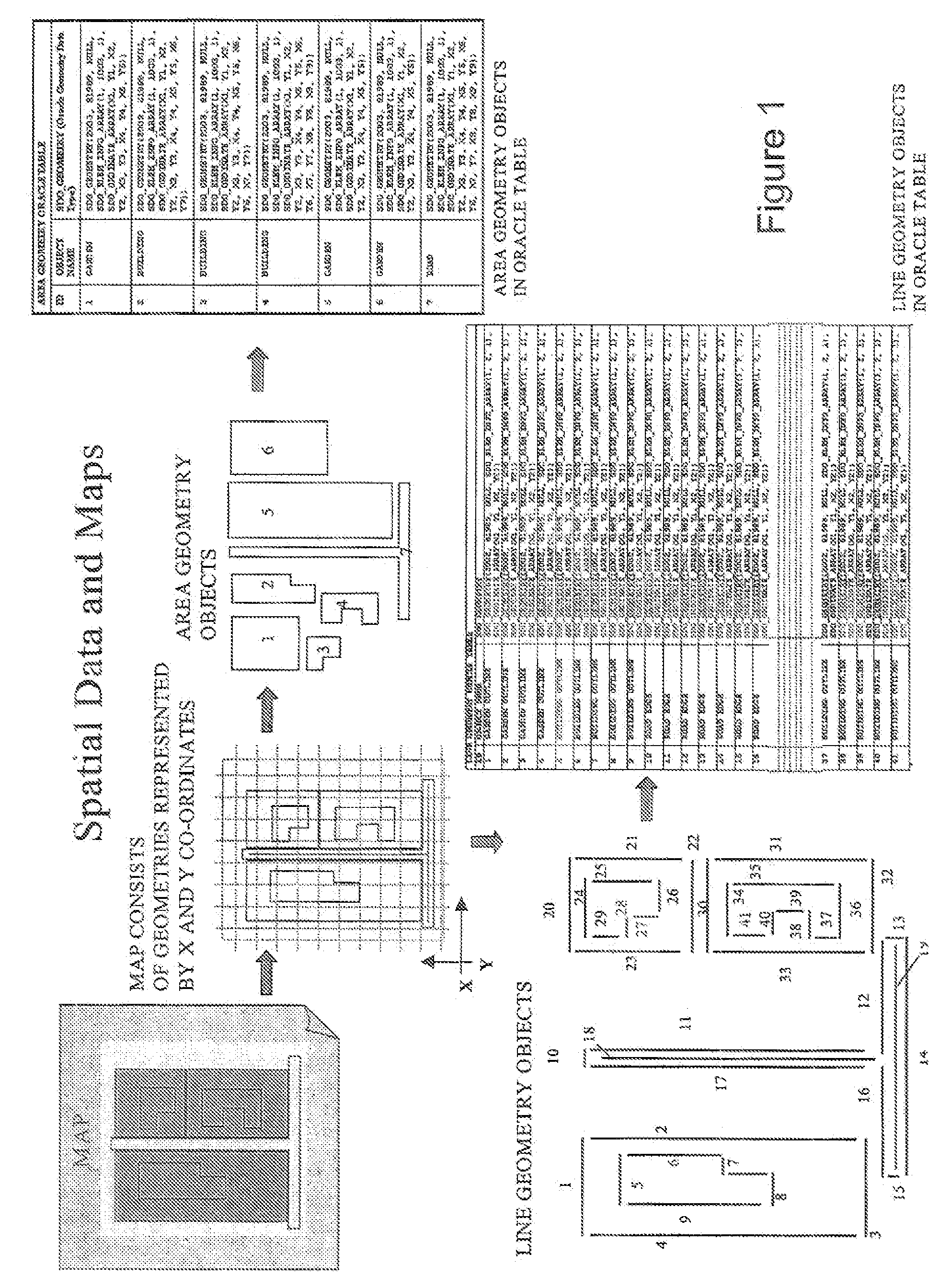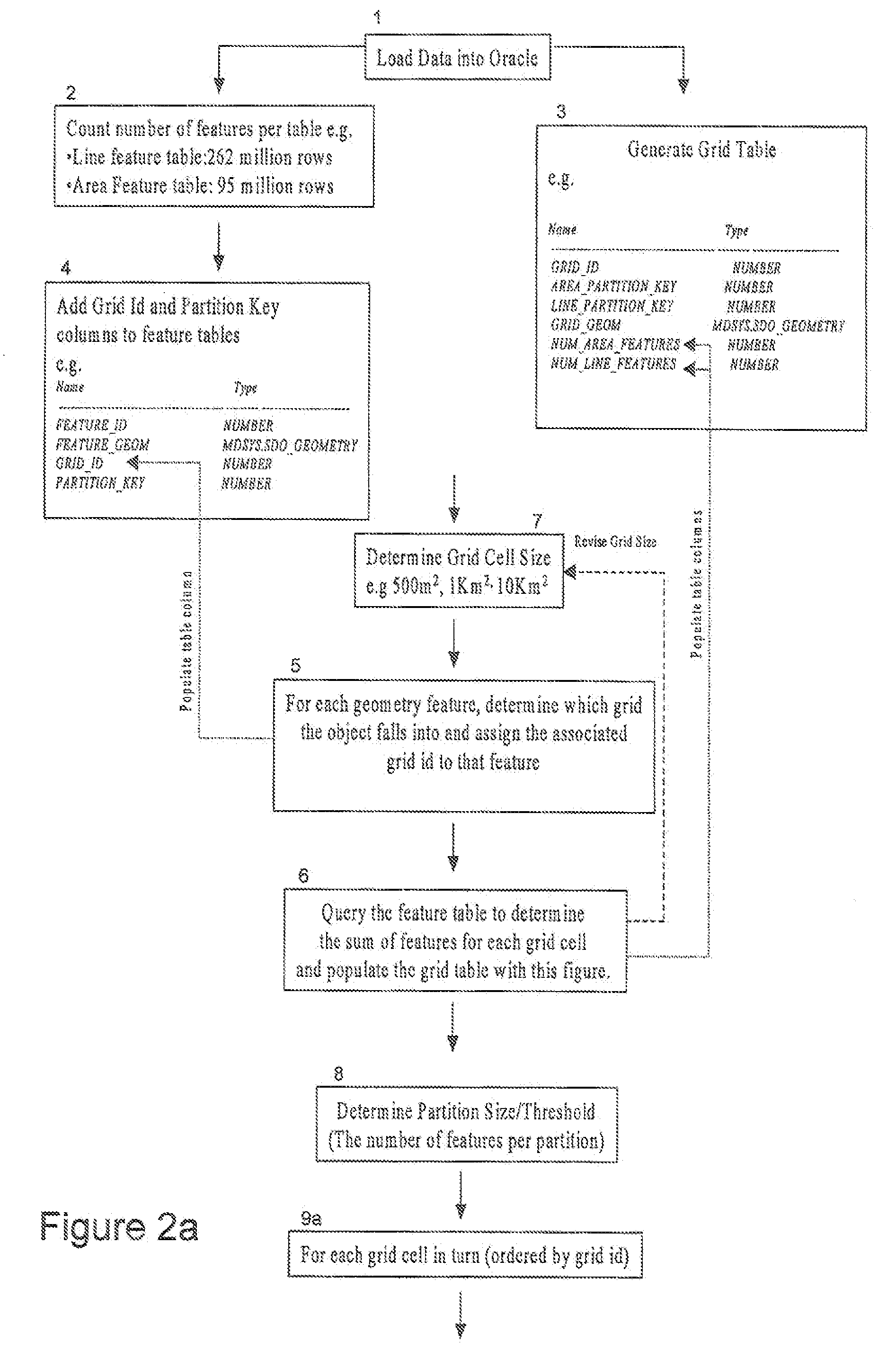Data Partitioning Systems
- Summary
- Abstract
- Description
- Claims
- Application Information
AI Technical Summary
Benefits of technology
Problems solved by technology
Method used
Image
Examples
Embodiment Construction
[0027]We first describe, by way of background, how map geometries are stored in Oracle™. As illustrated in FIG. 1, the geometries displayed on the map are stored in one or more Oracle™ tables. Each feature on a map can be made up of several area / polygon objects of multiple line objects. Each geometry object has associated X and Y co-ordinates for each vertex of the geometry, so we know where the feature exists in the real world and therefore where the feature will be displayed on a map.
[0028]In FIG. 1, a building on the map can be stored in Oracle as one area / polygon object and / or as several line objects, where each line represents an outer-wall of the building. The area / polygon representation of the building is stored in a separate Oracle table to the line objects.
[0029]We next describe databases and partitioning. The database tables that hold all of the area and line geometries can get very large. For example, there are over 262 million line geometries for the England and Wales Or...
PUM
 Login to View More
Login to View More Abstract
Description
Claims
Application Information
 Login to View More
Login to View More - R&D
- Intellectual Property
- Life Sciences
- Materials
- Tech Scout
- Unparalleled Data Quality
- Higher Quality Content
- 60% Fewer Hallucinations
Browse by: Latest US Patents, China's latest patents, Technical Efficacy Thesaurus, Application Domain, Technology Topic, Popular Technical Reports.
© 2025 PatSnap. All rights reserved.Legal|Privacy policy|Modern Slavery Act Transparency Statement|Sitemap|About US| Contact US: help@patsnap.com



